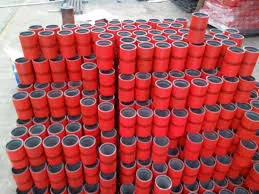- Afrikaans
- Albanian
- Amharic
- Arabic
- Armenian
- Azerbaijani
- Basque
- Belarusian
- Bengali
- Bosnian
- Bulgarian
- Catalan
- Cebuano
- Corsican
- Croatian
- Czech
- Danish
- Dutch
- English
- Esperanto
- Estonian
- Finnish
- French
- Frisian
- Galician
- Georgian
- German
- Greek
- Gujarati
- Haitian Creole
- hausa
- hawaiian
- Hebrew
- Hindi
- Miao
- Hungarian
- Icelandic
- igbo
- Indonesian
- irish
- Italian
- Japanese
- Javanese
- Kannada
- kazakh
- Khmer
- Rwandese
- Korean
- Kurdish
- Kyrgyz
- Lao
- Latin
- Latvian
- Lithuanian
- Luxembourgish
- Macedonian
- Malgashi
- Malay
- Malayalam
- Maltese
- Maori
- Marathi
- Mongolian
- Myanmar
- Nepali
- Norwegian
- Norwegian
- Occitan
- Pashto
- Persian
- Polish
- Portuguese
- Punjabi
- Romanian
- Russian
- Samoan
- Scottish Gaelic
- Serbian
- Sesotho
- Shona
- Sindhi
- Sinhala
- Slovak
- Slovenian
- Somali
- Spanish
- Sundanese
- Swahili
- Swedish
- Tagalog
- Tajik
- Tamil
- Tatar
- Telugu
- Thai
- Turkish
- Turkmen
- Ukrainian
- Urdu
- Uighur
- Uzbek
- Vietnamese
- Welsh
- Bantu
- Yiddish
- Yoruba
- Zulu
what is a pup joint
Understanding Pup Joints The Unsung Heroes of Drilling Operations
In the world of drilling and oil extraction, precision, and reliability are crucial. Among the many components that facilitate successful drilling operations, pup joints play a vital yet often overlooked role. So, what is a pup joint?
A pup joint is essentially a short length of drill pipe or tubing used in oil and gas drilling. Typically ranging from one to ten feet in length, these specialized joints are designed to connect various sections of drilling equipment and adjust the total length of the drill string. Their simplicity belies their significance in maintaining the integrity and efficiency of drilling operations.
The Importance of Pup Joints
Pup joints serve multiple purposes in drilling operations. Firstly, they provide a quick and effective means of making minor adjustments to the length of the drill string. This can be crucial in achieving the desired depth of a well or accommodating unexpected changes in geological conditions. By adding or removing a pup joint, rig operators can ensure that the drill bit is optimally positioned for efficient drilling.
Moreover, pup joints are instrumental in managing the dynamics of drilling operations. The drill string’s weight and stiffness can significantly impact how the drilling bit interacts with the rock formation. Pup joints allow operators to fine-tune these parameters, which can lead to enhanced drilling performance, faster penetration rates, and reduced wear and tear on both the drill bit and the drill string itself.
Design and Specifications
what is a pup joint

Pup joints are typically made from the same materials as standard drill pipe, ensuring compatibility and strength. They are available in various sizes and thread types to match the existing equipment on the rig. The choice of materials and rigorous manufacturing standards are critical, as drilling operations can subject pup joints to extreme conditions including high pressures, heavy weights, and abrasive environments.
The most common materials used in pup joint construction are carbon steel and alloy steel. These materials provide the necessary strength and durability to withstand the rigorous demands of drilling operations. Additionally, pup joints are often coated or treated to resist corrosion, particularly when used in offshore or environmentally sensitive areas.
Applications Beyond Oil and Gas
While the primary application of pup joints is in the oil and gas industry, their utility extends beyond drilling operations. In various construction and industrial settings, similar principles apply when adjusting lengths and accommodating equipment variations. The adaptability of pup joints makes them valuable in any application where precise length adjustments are necessary, which can include pipelines and heavy machinery assembly.
Conclusion
In summary, pup joints may be a small component of the larger drilling assembly, but their role is indispensable. From ensuring optimal drilling performance to enhancing the rig’s flexibility and responsiveness, pup joints contribute significantly to the overall success of oil and gas operations. As the industry continues to evolve, with increasing emphasis on efficiency and sustainability, the design and application of pup joints will undoubtedly advance in parallel. Understanding the functionality and importance of these unsung heroes can help us appreciate the complexity of the drilling process and the engineering behind it.
In drilling operations, every component counts, and pup joints are a perfect example of how even the smallest parts can have a considerable impact on overall efficiency and effectiveness in the pursuit of energy resources.
-
Well Casing Extension Couplings – Applications and InstallationNewsJun.06,2025
-
Types of Crossover Subs in Drilling & CompletionNewsJun.06,2025
-
Key Features of High-Quality Tubing Pup JointsNewsJun.06,2025
-
Installation and Maintenance Tips for Steel Couplings for PipeNewsJun.06,2025
-
How to Select the Right Pup Joint for Oil & Gas OperationsNewsJun.06,2025
-
Applications of Stainless Steel Pipe CouplingsNewsJun.06,2025







